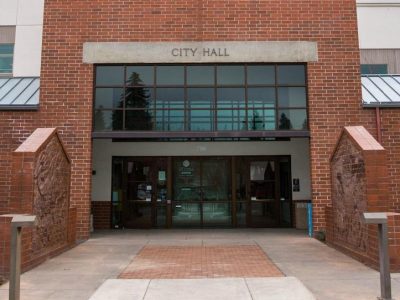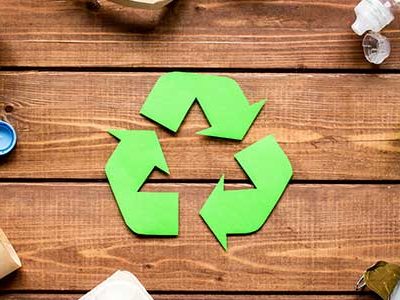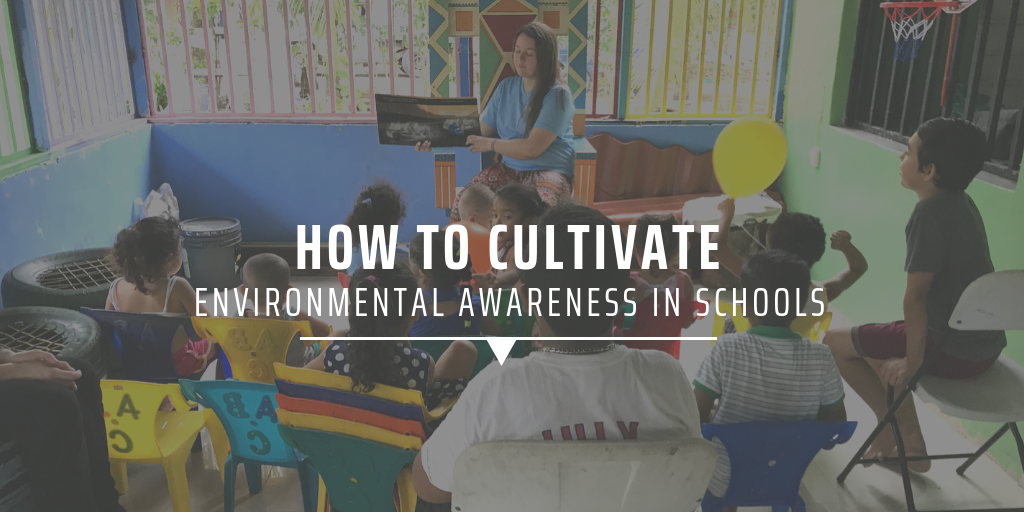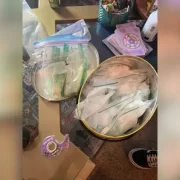
Between waste from gifts and gift wrap, single-use dinnerware, and energy-wasting Christmas lights, the holidays tend to be a notoriously wasteful time of the year. But, it doesn’t have to be that way. Green Matters spoke with Lauren Olsen, the Sustainability Expert and Zero Waste manager of World Centric, a company focused on compostable foodservice ware and packaging, for tips on celebrating the holidays sustainably.
Stay tuned for Olson’s words of wisdom, to ensure you’ll be rocking around the Christmas tree this holiday season in the most mindful and responsible way imaginable.
Although most of us think of The Grinch or Ebenezer Scrooge as a classic holiday villain, it turns out we should actually be more worried single-use batteries. While they make for potentially dangerous waste, but battery sales skyrocket during the holiday season to power lights and decorations, toys, and other Christmastime staples. So, Olsen recommends opting for rechargeable if possible.
“Approximately 40 percent of all battery sales happen during the holidays,” she explains. “If these batteries are not rechargeable, they will likely end up in a landfill once they run out of power. Try giving and using rechargeable batteries instead.”
Sometimes gifting something impersonal gets you out of finding “the perfect present” for your boss or mother-in-law, but you’ll want to think twice before doing so. Oftentimes, unwanted gifts are discarded in the trash — making for landfill waste — so Olsen recommends to always find a gift that’s either experiential, or something you know the receiver will like.
“Think before you buy! If you aren’t sure what to get someone, try giving them an experience like tickets to a museum (when they open again) or a gift certificate to a local restaurant. Better yet, donate in their name to a cause that they support,” she tells us.
She also says if you do end up receiving a gift you really don’t want, make sure to donate it, or give it to someone else.
“According to a study by Finder, 3.69 percent of Americans admit to throwing away unwanted gifts. If you receive gifts you weren’t wishing for this year, don’t just toss them into the trash. Instead, give them to a friend or donate them to a local charity.
While buying gift wrap from the pharmacy is an easy way to make your gifts Insta-worthy, single-use gift wrap is wasteful, and is often comprised of non-recyclable materials. So, Olsen suggests either opting for something creative, such as newspapers or magazines, or a reusable material that could ultimately become part of the gift.
“If every family in the US wrapped just 3 gifts in reusable materials, we could save enough paper to cover 45,000 football fields. Most store-bought wrapping paper is not recyclable because of its shiny coating. Instead of wrapping paper, wrap presents in old maps, newspapers, or catalogs,” she explains.
“Or use reusable materials like a scarf, dish towel, or blanket — these things all make gifts as well! Plus, if every household in the US used 2 ft. less of ribbon, we could save about 38,000 miles of ribbon waste. That’s enough ribbon to tie a bow around the Earth, which is 24,901 miles in circumference.”
Don’t get us wrong — we love holiday cheer and the décor that comes with holiday spirit. But oftentimes, plastic decorations are discarded into the trash. So, Olsen suggests making your own decorations. You’ll simultaneously do the environment — and your wallet — a tremendous favor by choosing to do so.
“Single-use plastic decorations go right in the trash,” Olsen tells us. “It’s easy to make your own holiday decorations — paper chains, clementine wreaths, pine cones, and paper snowflakes will add festive cheer without heading for the landfill.”
While real Christmas trees are proven to be more sustainable than fake ones, Olsen suggests replacing the classic evergreen with something you’ll be able to plant this time around. Because you won’t be entertaining many — or any — guests this year, she suggests buying something that you’ll use past the holidays, to bring joy in a slightly more sustainable manner this year.
“Since you don’t have a big gathering to prepare for or travel, it might be a good season to re-think your tree. 30 million Christmas trees are cut down each holiday season in the U.S. Consider getting a potted tree that you can plant when Christmas is over,” she explains.
“After the holidays are over, don’t just throw your tree in the trash. Many communities collect Christmas trees and turn them into mulch or wood chips, or you might even find a goat farm that would gladly take your tree.”
Even though buying aluminum cookie cutters and cheaper appliances may be tantalizing, Olsen says bakers should opt for items that will last a long time, and that will be useful in more ways than one. She has a few favorite items she strongly suggests buying, to ensure your Christmas baking is as green as possible.
“It’s always better to do more with less,” she says. “Another thing to think about is the longevity of individualized appliances and the end of life— will it last a long time? Can it be recycled or repaired? Some of my favorite items are a basic aluminum cookie sheet and a cast-iron skillet. I use the case iron to make biscuits and scones.”












